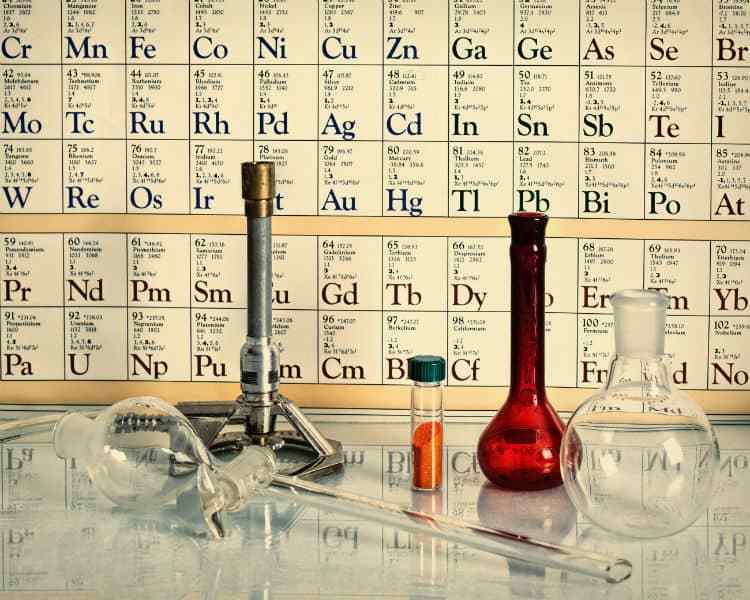
Who Made the Periodic Table and Why?
December 6, 2018 - Emily Newton
Revolutionized is reader-supported. When you buy through links on our site, we may earn an affiliate commission. Learn more here.
It’s on at least one wall in every science classroom and laboratory in the world — the periodic table. This list of the elements has become such a mainstay in modern classrooms, but most of us don’t know this history of this iconic piece of wall decor. Who made the periodic table, and why did the scientific community need it? How has it changed over the years?
The Inventor of the Periodic Table
Dmitri Mendeleev often gets the credit for the creation of the periodic table we use today. He created his table by classifying and organizing the elements by their atomic weight. While it might be most similar to the table we use today, it isn’t the first periodic table.

That honor belongs to a French scientist named Alexandre-Emile Béguyer de Chancourtois. He published a paper with the French Academy of Sciences in 1862 that also described arranging the elements by their atomic weight. He discovered as well that if he used a paper tape to list the currently discovered elements, he could wind the tape around a cylinder, and similar elements would appear in threes down the cylinder. Chemists largely ignored his paper, released more than five years before Mendeleev’s table, since de Chancourtois was a geologist.

Other scientists, like John Newlands, noticed that when their atomic weight arranged elements, they would group themselves into eights based on their similarities. Newlands proposed a Law of Octaves, but Mendeleev’s table later supplanted this.
Changes to the Table for Modern Science
Mendeleev’s periodic table might have provided the foundation for the table we see hanging on the walls, but in the late 1800s, the basic structure of the atom had not been discovered yet. Chemists in the 1800s couldn’t view molecules, and things like protons and isotopes were unknown. They could organize elements by their atomic weight but not by their physical properties.

At the time there were only 50 or so elements on the table, too. Today, there are 118 elements on the periodic table, and we’re discovering more new elements every year.
Reading the Periodic Table
So, how do you read the periodic table?

Each element is assigned a name, a symbol, an atomic weight and an atomic number. The elements are ordered by their atomic number, which indicates the number of protons inside the element’s nucleus and the number of electrons orbiting the nucleus. The number of protons and electrons is almost always equal. Hydrogen, for example, has an atomic number of one which means it has one proton and one electron. Oxygen has an atomic number of eight, so it has eight protons and eight electrons.A number underneath the symbol indicates the atomic mass of the element. This number shows the average mass of the number of different isotopes the element can make.
The symbol for each element will usually correspond with the name of the element, but not all of them do. Sure, you’ve got H for Hydrogen, C for Carbon and O for Oxygen, but where did they get things like K for Potassium or HG for Mercury?
Some of the symbols are based on old lexicons. HG for mercury comes from an old Greek word — hydrargyrum — which means liquid silver. Potassium’s K comes from the medieval Latin word for potash, which was kalium.
The Importance of the Table
Now that we know where the periodic table comes from, why is it so important for modern chemists? The reason is that it’s a shortcut to figuring out a bunch of information about each element. The element’s location on the table makes it easier for scientists to predict the kind of reactions that each component will have with the ones that surround it. Scientists organized the elements based on a trend of element properties. Moving left to the right across any of the rows, or top to bottom down one of the columns shows increases or decreases in:
- Atomic radius
- Ionization energy
- Electron affinity
- Electronegativity
By studying these trends, researchers can predict the kind of reactions they’ll see between two given elements on the table. Holes in the table are useful for predicting new elements.
Just because the periodic table shows up on the wall of every science classroom in history doesn’t mean it’s something we can take for granted. Chemists and chemistry students alike find the tool invaluable useful for predicting the results of chemical reactions in addition to its use in predicting new elements.
The next time you glance at your periodic table, look at it with new eyes and a new appreciation for all the hard work that was done in between the 1800s and now to make this scientific tool a reality.
Revolutionized is reader-supported. When you buy through links on our site, we may earn an affiliate commission. Learn more here.
Author
Emily Newton
Emily Newton is a technology and industrial journalist and the Editor in Chief of Revolutionized. She manages the sites publishing schedule, SEO optimization and content strategy. Emily enjoys writing and researching articles about how technology is changing every industry. When she isn't working, Emily enjoys playing video games or curling up with a good book.







the elements in six dimensions at:https://www.youtube.com/watch?v=f7o0kah6soA